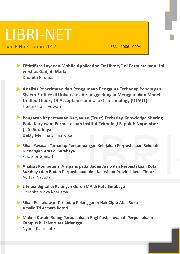Journal Of Emergency
ISSN 2301-7864
Vol. 3 / No. 1 / Published : 2014-06
Order : 3, and page :14 - 19
Related with : Scholar Yahoo! Bing
Original Article :
The effect of amnion freeze-drying to prevent adhesion in rabbit tendon achilles healing
Author :
- Prof. M. Sjaifuddin Noer, dr, Sp.B, SpBP-RE (K)*1
- Franky Prilyanda, dr*2
- Dosen Fakultas Kedokteran
- Mahasiswa Fakultas Kedokteran
Abstract :
Background: The main aim of tendon surgery is to restore preserves tendon gliding. The formation of peritendinous adhesion around the repair site is one of several adverse event that may prevent achievement of this aim. The freeze - drying amniotic derives from the fetal membranes which consist of two layers that may have a function as a barrier in the formation of peritendinous adhesion, rich of collagent, accelerate the epitelization and preventing fibrotic tissue formation. Those content of the amniotic membrane could prevent the formation of peritendinous adhesion in tendon healing. The role of freeze – drying amniotic membrane was investigated in rabbit with regard to the prevention of adhesion formation following Achilles tendon repair. Objective: The objective of this study was to investigate the use of freeze - drying amniotic membrane as a long-term bioprosthesis in hand surgery Design: Experimental research Methods: The experimental research use 32 New Zealand rabbits, devided into two groups. On all group, one of the Achilles tendon was sharply devided, group I was treated by Freeze-drying amniotic, and group II was not treated Freeze-drying amniotic (control). After ten days, the animal were killed, and phatology anatomy examination was done on therepair site. The adhesion was assessed under light microscope with see the number of fibroblast. Results: Histologic examination demonstrated that use of the freeze – drying amniotic membrane significantly reduced the amount of adhesion compared with the other groups . 10 day after implantation no remnants of freeze – drying amniotic membrane could be identified at the tendon repair site. Conclusions: Freeze–drying amniotic membrane decrease the amount of fibroblast in tendon repair wound. It’s use in the prevention the adhesions of tendons.
Keyword :
Flexor tendon , Repair, Reconstruction, Adhesion, Freeze–drying Amniotic membrane,
References :
Archauer, MB,(1995) Tendon, in Plastic Surgery Indication Operation and Outcomes 368-83 : Mosby
Archive Article
| Cover Media | Content |
|---|---|
 Volume : 3 / No. : 1 / Pub. : 2014-06 |
|












